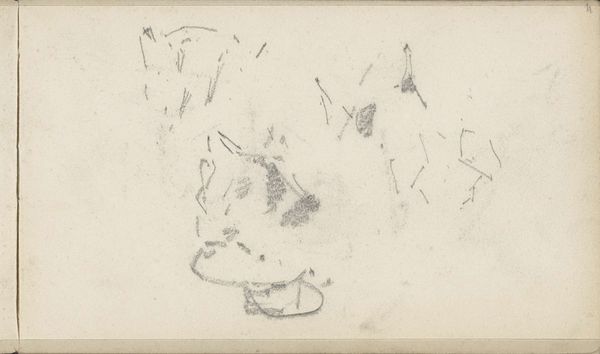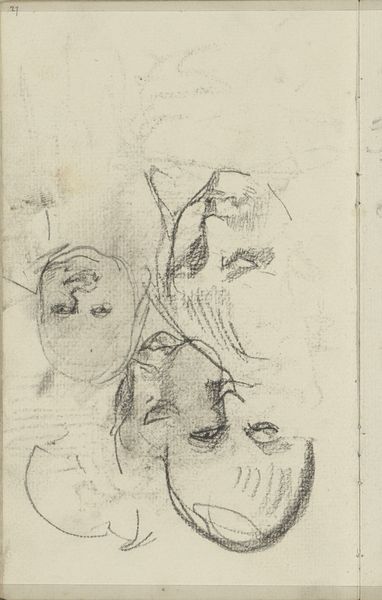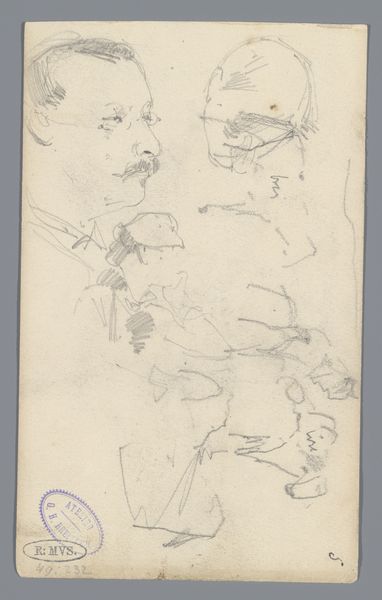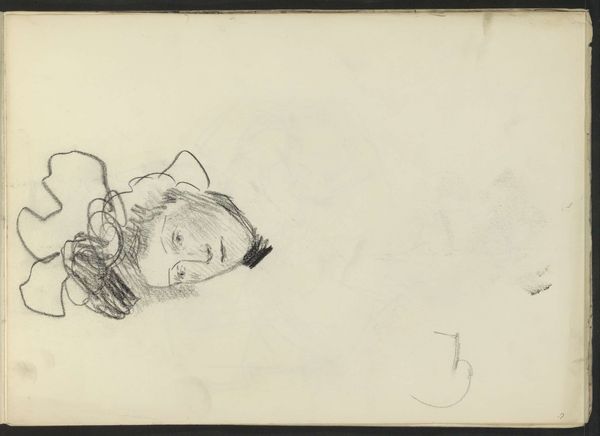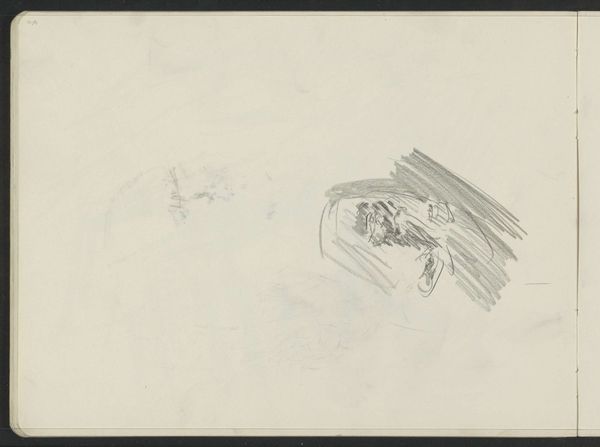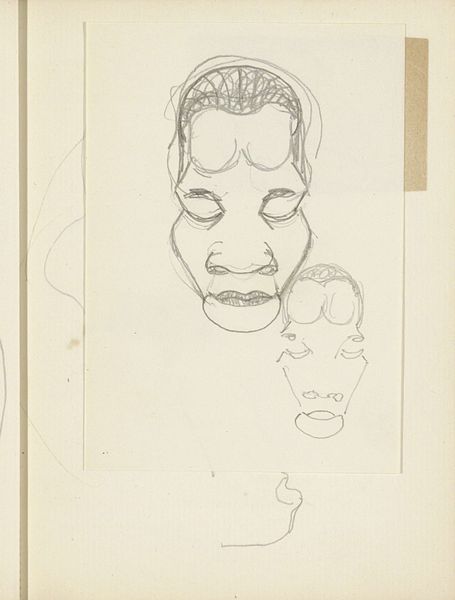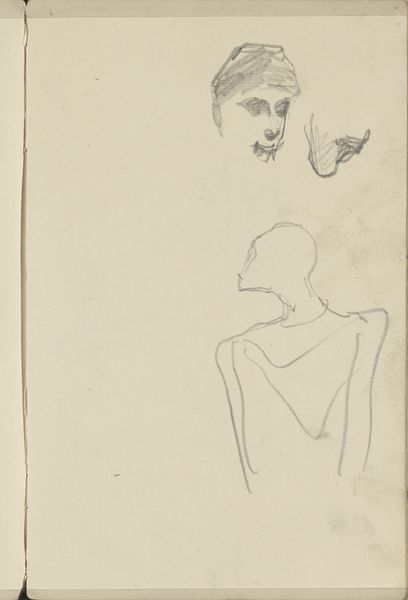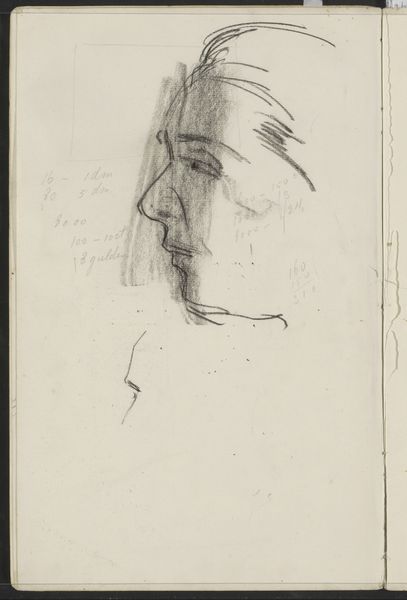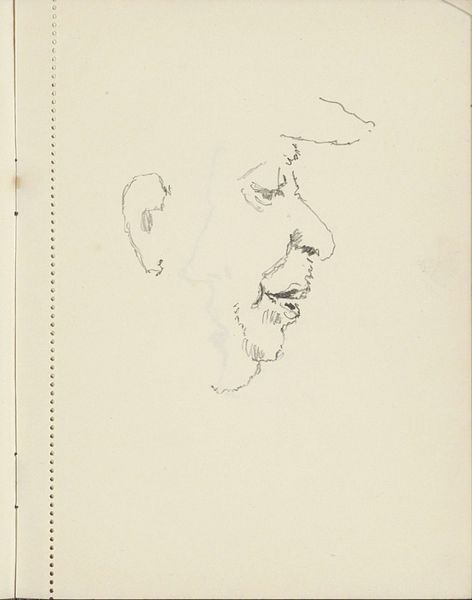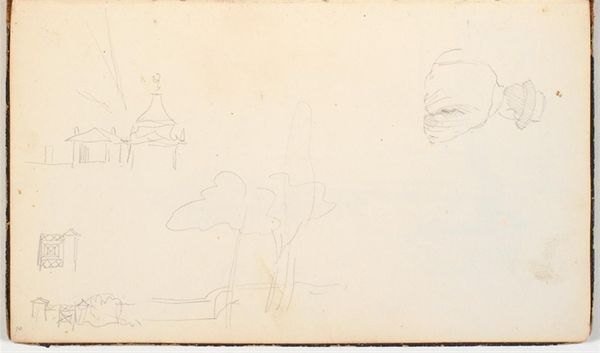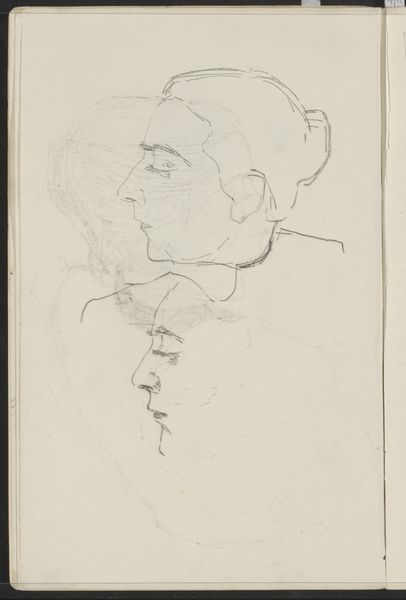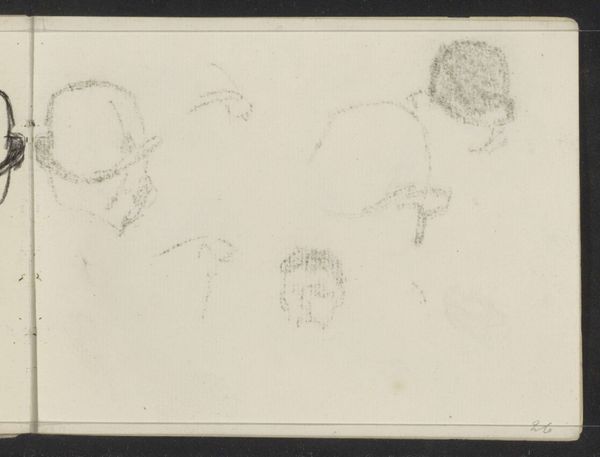
drawing, pencil
#
portrait
#
drawing
#
impressionism
#
figuration
#
pencil
#
realism
#
building
Dimensions: height 99 mm, width 162 mm
Copyright: Rijks Museum: Open Domain
Editor: This is "Figuurstudies en daken," or "Figure studies and roofs," by George Hendrik Breitner, made sometime between 1880 and 1882. It's a pencil drawing. It feels almost like a collection of fleeting thoughts, not quite formed. What do you see in this piece, beyond just a sketch? Curator: These aren’t fully realized portraits, are they? More like glimpses, archetypes. Faces emerge, almost shyly, from the blank page. Breitner isn't just recording features; he's capturing a presence, or the potential of a presence. Note the roofs underneath them too. These are the symbols of their belonging in the cityscape of Amsterdam. Do these evoke something of how urban life and individuality play against each other in art of that time? Editor: I think I see what you mean. They seem vulnerable. The bareness of the sketch makes them appear incomplete somehow. They evoke this sense of melancholy and the search for self. Is there something in particular that makes you say that? Curator: Consider the symbolic weight of the averted gaze. The way the figures refuse to meet our eyes… This isn't simply about modesty. This carries over into other works of art and hints to a feeling of longing and detachment, which we can also see in the composition, the sketch style, the choice of medium…everything blends perfectly to reflect social life, that era. It echoes throughout visual culture, like a quiet hum beneath the surface of this era. It’s not only visual. It has an emotional sound as well. What kind of emotions would this transmit to the people in those days, compared to us? Editor: That's fascinating! I had not considered the weight behind something as simple as where they are looking. So it is not simply the portraits on display, but their very existence which reflects on Amsterdam citizens of the time, and perhaps even evokes a collective consciousness, too. I hadn't thought about it like that at all! Curator: Exactly! It's in this complex language that we have to interpret those fleeting faces as collective figures representing 19th century Amsterdam society. It really gives one a fresh appreciation for even the most minor sketch!
Comments
No comments
Be the first to comment and join the conversation on the ultimate creative platform.
